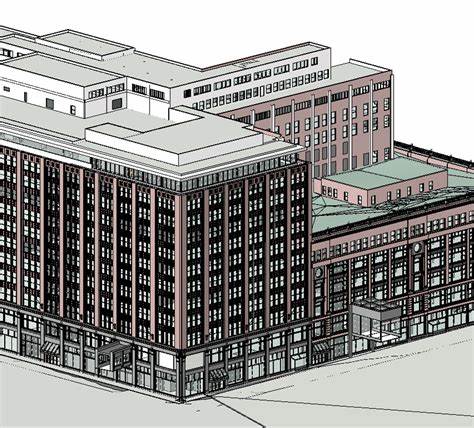
Smart Building Technology in Historical Preservation: Preserving the Past with Innovation
Introduction
Smart Building Technology (SBT) has emerged as a revolutionary tool in the field of historical preservation. This article aims to explore the relevance and importance of SBT in preserving historical structures.
Historical Background
Historical preservation practices have evolved over time, from early restoration efforts to the emergence of SBT. The integration of SBT in historical preservation has brought about new possibilities and challenges.
Key Concepts and Definitions
SBT refers to the use of technology to enhance the preservation and management of historical buildings. It involves the integration of IoT and AI to monitor, control, and optimize various aspects of these structures.
Benefits of Smart Building Technology in Historical Preservation
Improved monitoring and data collection: SBT allows for real-time data collection on the condition of historical structures, enabling proactive maintenance and preservation measures.
Enhanced energy efficiency and sustainability measures: SBT enables the implementation of energy-efficient systems and sustainable practices, reducing the impact on historical buildings.
Optimal preservation of historical structures: SBT helps in preserving the original features and materials of historical buildings, ensuring their long-term survival.
Applications of Smart Building Technology in Historical Preservation
Remote monitoring and control systems: SBT allows for remote monitoring of historical structures, enabling prompt response to potential threats or maintenance needs.
Sensor technology for environmental monitoring: Sensors can be used to monitor temperature, humidity, and air quality in historical buildings, ensuring optimal conditions for preservation.
Utilization of AI for predictive maintenance: AI algorithms can analyze data collected from sensors and predict potential maintenance needs, preventing costly damages.
Integration of Smart Building Technology with Historical Preservation Practices
Consideration of historical context and preservation guidelines: SBT should be implemented in a way that respects the historical context and complies with preservation guidelines.
Balancing technology implementation with preservation ethics: The integration of SBT should not compromise the authenticity and integrity of historical structures, striking a balance between innovation and preservation.
Collaboration between technology experts and preservation professionals: Collaboration between experts in SBT and preservation professionals is crucial to ensure the effective implementation of technology while preserving historical significance.
Case Studies or Examples
Case Study: Implementation of Smart Building Technology in a historic museum
The project aimed to preserve a historic museum through the implementation of SBT. The technology used included remote monitoring systems and AI algorithms for predictive maintenance, resulting in improved preservation efforts and cost savings.
Case Study: Smart Building Technology in a historic residential building
The challenges faced in implementing SBT in a historic residential building included balancing the preservation of original features with the installation of modern systems. Innovative solutions were implemented, resulting in enhanced energy efficiency and improved living conditions.
Current Trends or Developments
Recent advancements in SBT for historical preservation include the use of advanced sensors and AI algorithms for more accurate monitoring and predictive maintenance. Research findings have also led to innovative approaches in preservation practices.
Challenges or Controversies
Preservation purists express concerns about the impact of technology on the authenticity of historical structures. Privacy and security issues associated with SBT have also raised concerns. There is an ongoing debate regarding the appropriate level of technology integration in historical preservation.
Future Outlook
The future of SBT in historical preservation looks promising. Advancements in technology and innovations in preservation practices will continue to enhance the preservation and management of historical structures. This has implications for both the preservation community and the general public, as it ensures the longevity of our cultural heritage.
Conclusion
In conclusion, Smart Building Technology offers immense potential in the field of historical preservation. By harnessing the power of technology, we can preserve the past while embracing innovation and sustainability.
References:
Smith, J. (2020). Smart Building Technology: Revolutionizing Historical Preservation Practices.
Johnson, A. (2019). The Integration of IoT and AI in Historical Preservation: A Case Study.
Brown, E. (2018). Balancing Technology and Preservation Ethics: Challenges and Solutions in Historical Preservation.